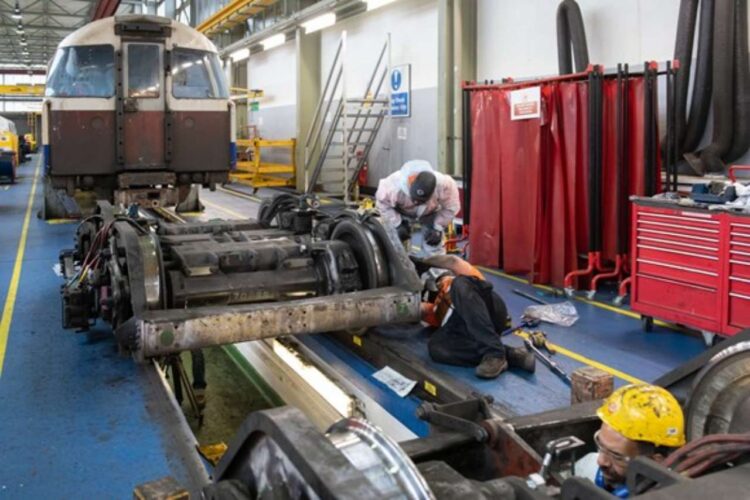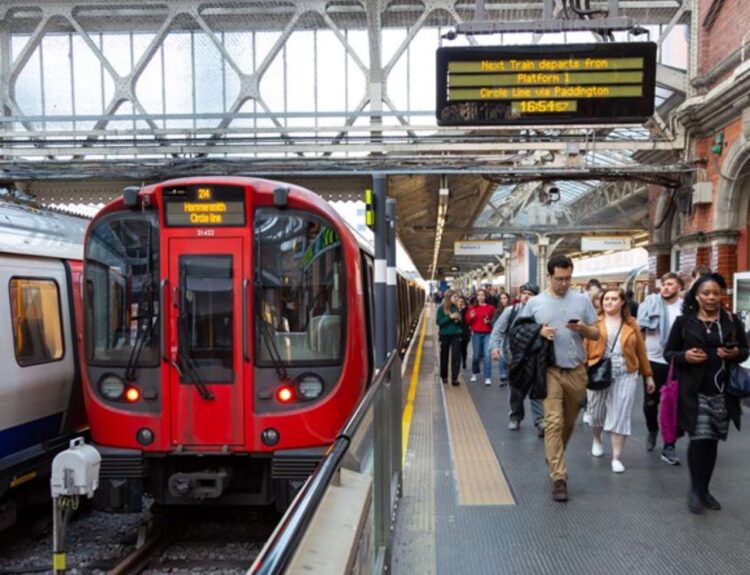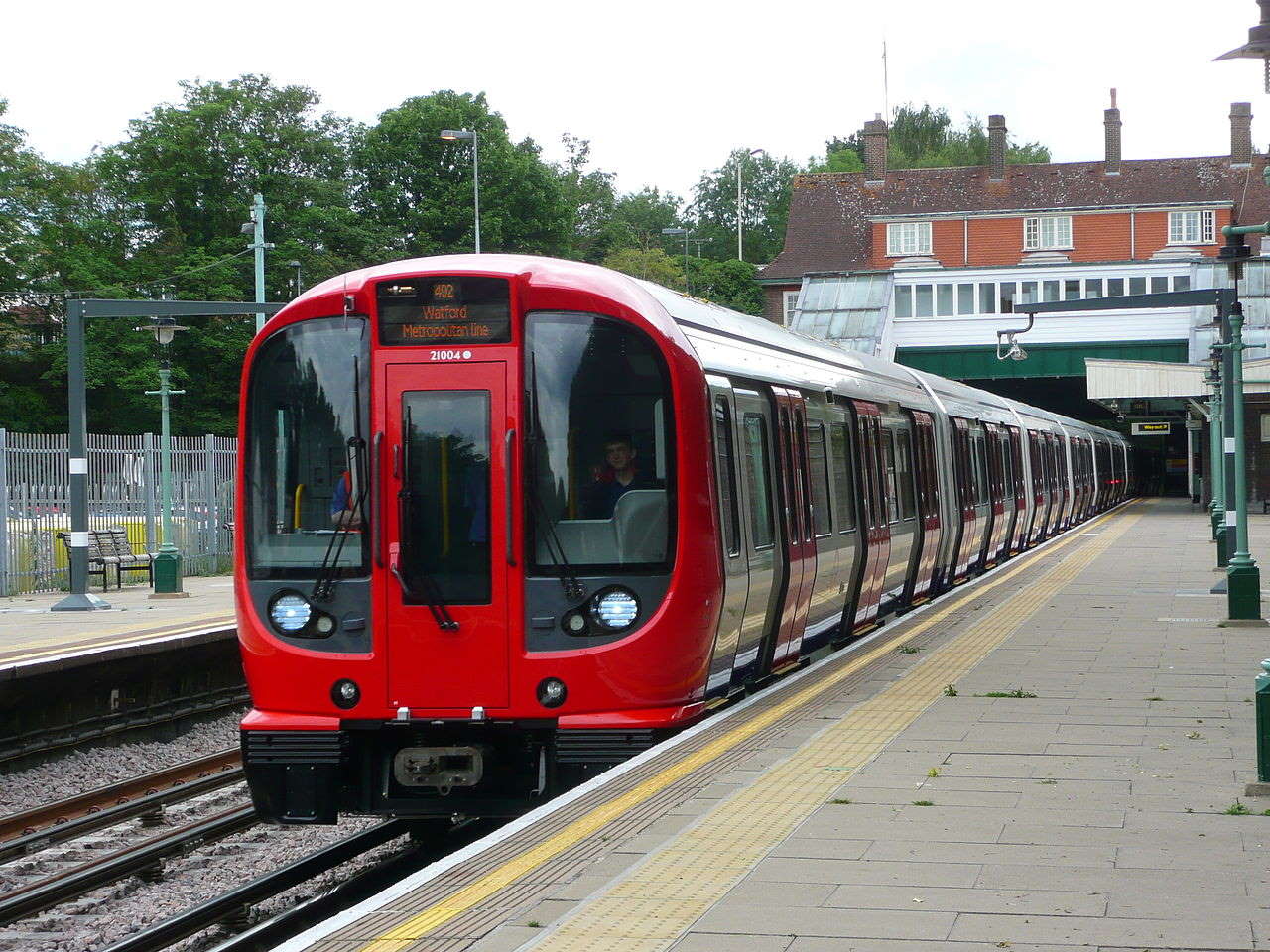Transport for London (TfL) has welcomed figures showing that London Underground carried four million journeys last Thursday, and has repeated its call for government funding to enable it to meet increasing demand.
The figures show that last week (19 – 25 November 2023), passengers completed 24.78 million Tube journeys, and Thursday 23 November saw the highest number, around 4.05 million. TfL sees this as a milestone for London’s transport network as passengers return to the Tube after the Covid-19 pandemic. Thursday’s passenger total is 7.6 per cent more than on the equivalent day last year (24 November 2022), when passengers made around 3.76 million journeys.
The report on the figures is available here.

More than five hundred trains are in service across the network, of which over one hundred are about fifty years old. TfL is reminding the public that the Underground is vital for commuters, shoppers and visitors to London, and that it supports economic growth in London and the rest of the country.
Midweek passenger number now regularly exceed 3.7 million, a rise of around 6.5 per cent compared to last year. Mondays usually see more than three million journeys made, and Fridays more than 3.6 million. Journey numbers at weekends are also rising, and several central London stations are now welcoming as many or even more passengers now than before the pandemic.
On Night Tube and Night Overground, around sixty thousand journeys are made on a Friday night between 0030 and 0430, and nearly seventy thousand on a Saturday night between 0030 and 0430.
Since it opened on 24 May 2022, the Elizabeth line has now carried around 270 million journeys on its routes from Reading and Heathrow in the west to Shenfield and Abbey Wood in the east. Passengers make more than 720,000 journeys each day during the Tuesday-to-Thursday period. The line’s busiest day so far was Thursday 9 November with more than 766,000 journeys, and it regularly has one of the highest customer satisfaction scores of all the TfL modes of transport.
Docklands Light Railway and London Overground are also returning to pre-pandemic passenger numbers. Around 325,000 journeys are made on the DLR and around 625,000 on London Overground on an average weekday.
London’s bus passenger numbers are also increasing, with around five million journeys now being made daily. TfL believes that its new ‘Superloop’ network of limited-stop express bus routes – which by spring next year will circle the entire capital and connect key town centres, stations and transport hubs in outer London – are attracting increasing numbers to outer London journeys.

London’s population had returned to around 8.86m in mid-2022, and with passenger numbers increasing, TfL argues that it needs to continue modernising its services. TfL states that it is in a position to fund three quarters of the capital investment it requires next year, but is awaiting confirmation from the government that it will fund the remaining quarter.
The government’s recent Autumn Statement did not include this confirmation, and TfL believes that its funding situation is now urgent. It has welcomed the government’s stated commitment to invest in transport across the UK and boost productivity in the country’s network of strong city regions. However, it points out that despite London Underground being considered a national asset, and despite it previously receiving government financial support, it is currently being denied the multi-year funding.
TfL points out that investment in London’s transport significantly and directly benefits jobs and growth outside the capital, including more than one hundred thousand jobs in TfL’s supply chain outside of London. It argues that if it received sustainaed and adequate funding, it could support jobs and growth across the country.
Mayor of London Sadiq Khan said: “It’s fantastic to see London truly roaring back post-pandemic – this impressive boost in ridership will support London’s and indeed the whole UK’s wider economy recovery. There’s no doubt that as Christmas approaches the appeal of London’s world-leading shops, restaurants and other venues is as strong as ever.
“This data shows that people are returning to their pre-pandemic travel patterns. We can’t rest on our laurels – In order to further support this boom and deliver the world class transport system London deserves we need sustained capital investment over multiple years with support from central Government. This will help us support jobs and economic growth in London and across the country, and build a better, more prosperous London for all.”
Andy Lord, London’s Transport Commissioner, said: “It’s great news that we are now seeing ridership numbers reach 4 million a day on the Tube again, and that ridership is growing across our services. Public transport is a fundamental component of our economic recovery, and we must continue to encourage public transport use if we are to revive and grow our economy. However, we need the Government to urgently confirm that they will provide the capital investment support we need for 2024/25. TfL’s investment in the supply chain supports more than 100,000 jobs across the UK, almost half of which are in small medium enterprises, who are also reliant on TfL’s funding certainty.”
Muniya Barua, Deputy Chief Executive of BusinessLDN, said: “These rising Tube numbers demonstrate the urgent need for the Government to agree a long-term capital funding settlement for TfL. Investing in London’s public transport network is essential to meet rising demand and keep the city moving. Providing certainty on funding would not only benefit the capital’s economy but also support jobs and growth across the country through TfL’s supply chain.”
Shobi Khan, CEO of Canary Wharf Group, said: “It’s fantastic to see London springing back to life, as evidenced by the growing activity here at Canary Wharf. Last year we saw 54 million people visit the estate, this year we expect this number to reach over 65 million, the highest in CW’s history. Office workers, residents and visitors alike are enjoying the diverse dining, shopping, amenity and entertainment options across the Estate.”
Ros Morgan, Chief Executive of Heart of London Business Alliance, said: “London is bouncing back. Four million daily journeys on the Tube is a fantastic milestone. We need such a thriving transport network to support businesses and cultural institutions across the heart of London.
“Whilst visitors are returning to the West End, they are still yet to do so at pre-pandemic levels. That is why we continue to push for policies to encourage people to visit London, such as tax-free shopping for international visitors and long-term strategic funding for TfL to improve transport infrastructure.”






Responses